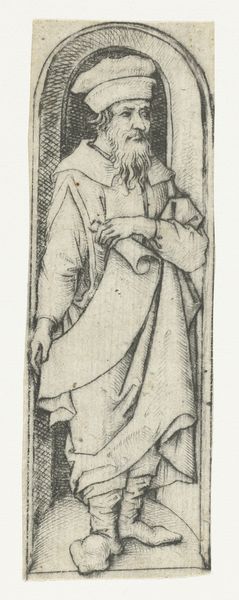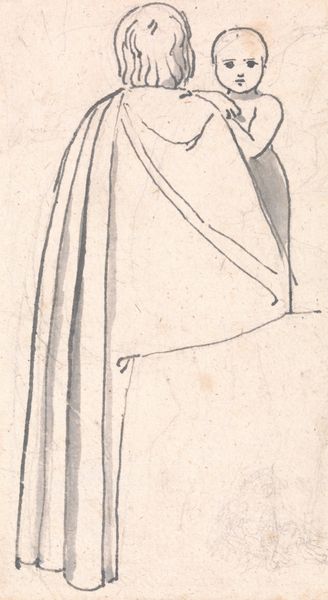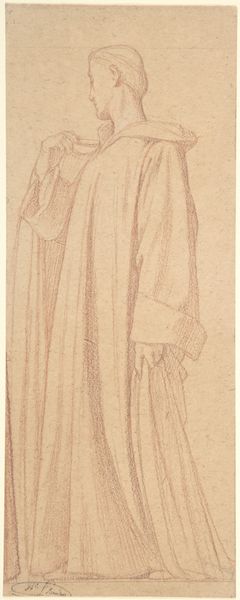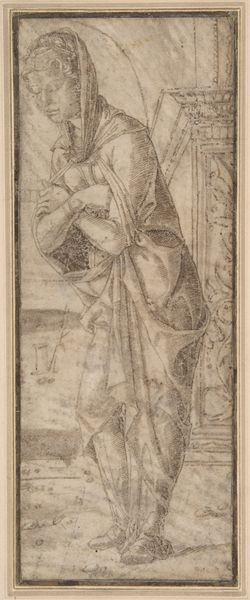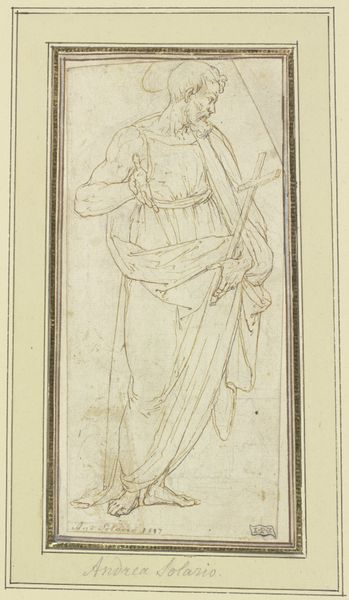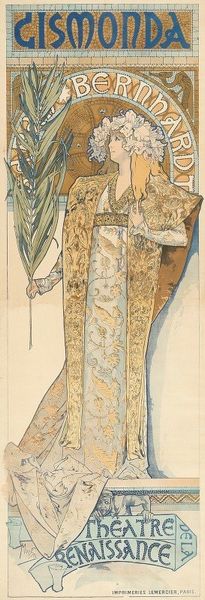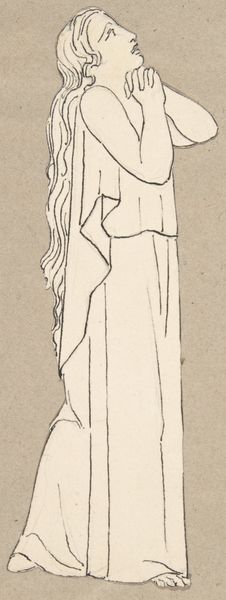
drawing, paper, pen
#
portrait
#
drawing
#
pen sketch
#
figuration
#
paper
#
pen-ink sketch
#
line
#
symbolism
#
pen
#
academic-art
Copyright: Public Domain: Artvee
Curator: This pen drawing is entitled "Huizer Meisje," which translates to "Girl from Huizen," and it dates back to 1893. Richard Nicolaüs Roland Holst is the artist responsible for this artwork. Editor: My first impression is a sense of stillness and a gentle melancholy. The limited color palette and delicate lines evoke a feeling of quiet contemplation, as if the girl is caught in a moment of introspection. Curator: Indeed. Roland Holst was a Dutch artist deeply involved in the Symbolist movement. His work often depicted idealized figures drawn from literature, folklore, or the bible. This particular piece provides an interesting glimpse into how regional identities were being shaped and depicted during that time. Editor: Right. Huizen, a village in the Netherlands, likely had a specific cultural identity. It's interesting to consider how Roland Holst chose to portray this young woman. What details did he emphasize, and what might he have left out? The way she is framed, almost like a painting within a painting, set among the flowers and stylized fence, invites questions of how rural life was aestheticized. Curator: I think that this piece has to be also viewed from the perspective of the rise of folklore studies during the late 19th century, an era that actively aimed to discover and display local identities. "Huizer Meisje" likely became a symbol to reinforce that image. The clean, elongated lines—characteristic of both academic and symbolist aesthetics—were popular ways to express beauty ideals at the time. Editor: It also reflects on questions of gender. This young woman is presented, yet simultaneously withheld from the viewer. The way Roland Holst uses line in this drawing, emphasizes the folds of her garment yet keeps the whole form slightly obscure—do we lose the individual here to the symbol? Curator: That's a compelling point. It demonstrates the multiple ways in which a seemingly straightforward portrait becomes laden with complex cultural, social, and artistic considerations. What was the relationship between the sitter, the artist, and his public, for instance? What messages did Holst transmit with the symbolism in this artwork, and who was the message for? Editor: Ultimately, what “Huizer Meisje” reveals about Dutch society and culture at the time it was created opens our perspective and invites further engagement with the cultural production of that period. Curator: I concur. Understanding how artwork is constructed within a historical, political and societal context is key to gaining a rich perspective on its message.
Comments
No comments
Be the first to comment and join the conversation on the ultimate creative platform.
